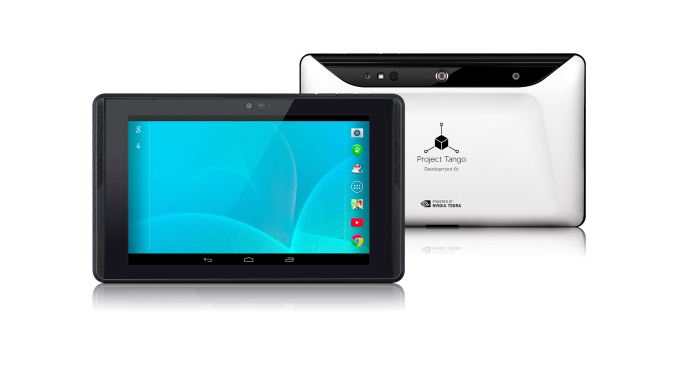It comes as no surprise that Nvidia’s new Tegra K1 chip made it inside the latest Google Project Tango tablet, as a number of rumours have been floating around for a while. This tablet is still in developer kit phase and is not ready to ship, but it helps researchers make tablets more aware of the environment they are in.
Google has set a modest goal of for Project Tango:
"The goal of Project Tango is to give mobile devices a human-scale understanding of space and motion."
The problem of today's phones and tablets is that despite their gyro and accelerometer sensors they are not aware of the 3D space around them.
A tablet that understands 3D environments
What Google and Project Tango want you to do is to use a bunch of sensors and the 120-degree camera to map the world around you. This can be used to create virtual reality objects in games, architects can render furniture inside rooms, visually impaired people might be able to move easier.
The holy grail of such technology would be to integrate it into a robot or self-driving car that could be fully aware of the environment around it. The big problem facing Google’s self-driving car today is that if you didn’t program a variable into system, the system cannot anticipate it, and eventually this could lead to accidents or various failures in the future.

The Project Tango Tablet development kit comes with a Tegra K1 SoC, currently the most powerful mobile chip for such applications, with 192 CUDA computational cores. We remember a presentation from GE where we saw a demo of the Jetson board, LiDAR (think of it as radar that shoots rays of light) and high quality camera that was capable to lock on and track multiple targets at the same time. You can use this for defence applications, but also for a robot in a busy environment (around lots of pople, around other robots in warehouse etc.). This demo was running with less than 10W of power. This is what you want for a robot or self-driving car as the energy and space play a big role.
Impressive computational specs
The Project Tango Tablet kit also comes with 4GB of RAM, 128GB of storage, motion tracking camera, integrated depth sensing, WiFi, BTLE, and 4G LTE (availability will depend on region and carrier).
The Tegra K1 will help process data from the camera and 3D sensors in order to create a map of the environment. These sensors allow the device to make over a quarter million 3D measurements every second, updating its position and orientation in real-time, combining that data into a single 3D model of the space around you. This is what Tegra K1 CUDA cores will be doing and having 4GB of memory will help process data faster. The hardware runs development APIs to provide position and orientation as well as depth. This data is served to standard Android applications written in Java, C++ as well as the Unity game engine.
Google is ready to send these development kits to universities, software developers that might help to develop applications and algorithms to make this mapping much better than it is today.
The ultimate application might include mapping your house and checking how a new IKEA sofa fits in your environment. It can be used for navigation in indoors, in buildings, airports and parking lots. Merchants might use it to guide you easier to the wanted product.
We will see if this technology makes it to a phone or tablet in the near future, but at least the research is happening as we speak.




